As you may have understood by now, Le Marche has been a very favourable place chosen by monks and friars. Indeed nowadays we can find many abbeys that are still intact, and they create together an interisting itinerary, such as the one we created in our previous post, about the Eremo dei Frati Bianchi or the Abbey of Sant’Urbano.
This time we take you to a magnificent place, hidden in the middle of the woods, Monastero di Fonte Avellana. We were already nearby, when we described a beautiful walk to you last time. But the abbey itself also deserves a visit!
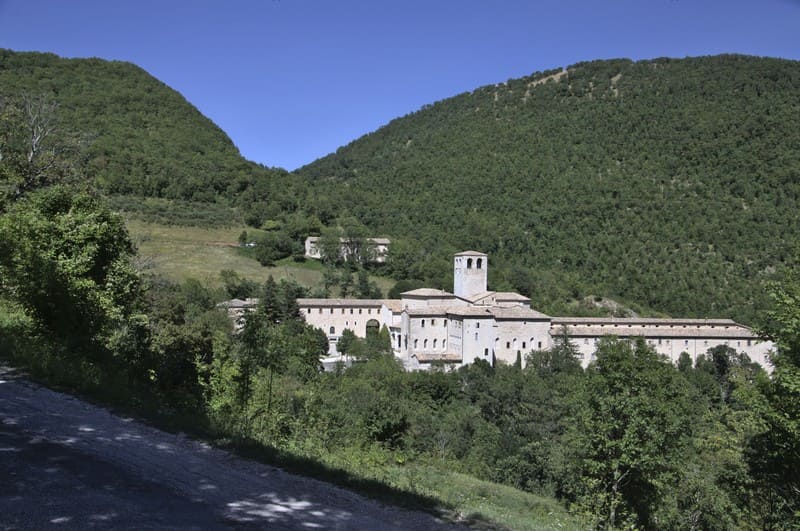
Nested at 700m high on the wooded flanks of Monte Catria (1700m high), the religious building is the main one in the municipality of Serra Sant’Abbondio.
In the 10th century, some monks built simple cells to live as hermits. They found the ideal place close to a water source (= fontana), surrounded by hazel trees (corius avellana). In 1325 the current monastery was established. Thanks to all these abbeys and monasteries, the area also gradually developed and recovered from the invasions of peoples and the decline after the fall of the Roman Empire. However, some monasteries became so powerful and wealthy that often not much was left of their original religious purposes.

In the 11th century, Saint Romuald influenced the monks with his teachings that would grow into the order of the Camaldolesi. Saint Peter Damiani (who we mentioned in the previous article) left his mark as prior. He was also immortalized with a bronze statue.
At the time of Napoleon the heyday came to an end and it would take until after the unification of Italy before the monastero flourished again. Today, a group of monks still lives there, with a pharmacy where you can buy homemade products based on herbs and there are guided walks in the abbey itself. Unfortunately it is not allowed to take pictures inside and you are not allowed to visit the old historical library.
During a tour you will visit:
- the Scriptorium, the space for one of the most important activities of all monks all over the world: the copying of ancient writings. In the 12th century the monks occupied the hall until the 15th century, because the invention of the printing press made copying superfluous. Today it has become a reading room.
- the Hall of San Giovanni da Lodi where parchment was made.
- the 12th century Chapter House where the monks gathered, the name chapter refers to the fact that the meetings were started with the reading of 1 chapter or chapter from the teachings of Saint Benedict.
- the 10th century crypt, the oldest part of the monastero
- the Romanesque church from the 12th century with a raised altar and a wooden cross from the 16th century and the neo-classical choir stalls from the 19th century.
The historical library, founded in 1733 by Abbot D. Giacinto Boni di Forlì, is unfortunately not open to the public. During the Napoleonic era and the unification of Italy, the books moved to other places, but luckily returned in 1933. The collection consists of a collection of books from the 15th century (early printing) to the 20th century, with the oldest copy from 1470. The handwritten parchment writings all ended up in the Vatican Library except for 11 copies.
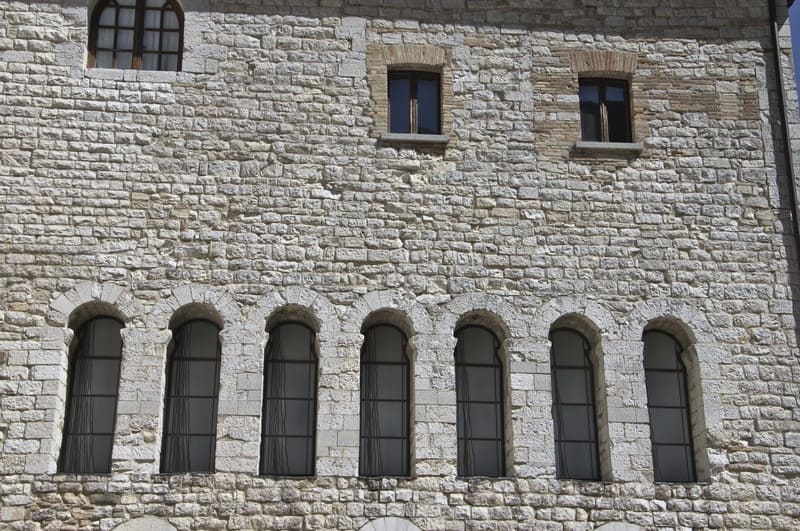
In 2011 the new stained-glass windows were inaugurated for the entire building, made by the Belgian glass artist and professor Joost Caen. For 4 years he was looking for a way to completely equip the sixty windows of the monumental Benedictine monastery with new windows. The original transparent alabaster or thin marble windows had long since disappeared and been replaced by ordinary glass windows. Half of the new windows sponsored a West Flemish family from Pittem in memory of a deceased family member. The rest of the funding came from Italy.
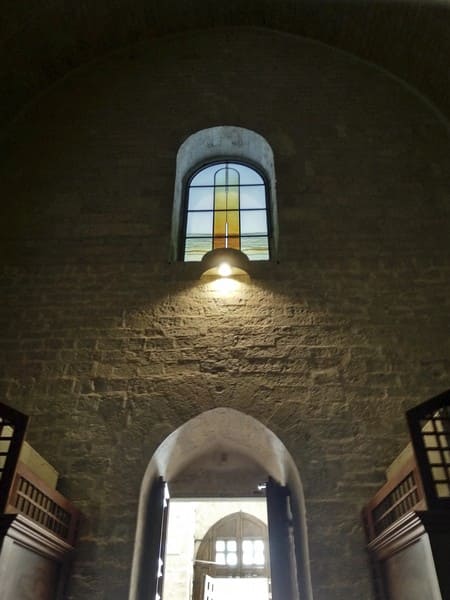
The most famous scion to ever stay here is probably the poet and writer Dante Alighieri; he was probably there around 1318, when he was exiled in Gubbio. He therefore mentions the monastery in Paradise XXI, 106-111: Dante meets Saint Peter Damiani.
These verses are read in a memorial stone:
“ Tra duo liti d’Italia surgon sassi,
E non molto distanti alla tua patria,
Tanto che i tuoni assai suonan più bassi:
E fanno un gibbo che si chiama Catria,
Di sotto al quale è consecrato un ermo,
Che suol esser disposto a sola làtria. ”
(Paradiso XXI, 106-111)
“Twixt either shore
Of Italy, nor distant from thy land,
A stony ridge ariseth, in such sort,
The thunder doth not lift his voice so high,
They call it Catria: at whose foot a cell
Is sacred to the lonely Eremite,
For worship set apart and holy rites.” (Translated by THE REV. H. F. CARY, M.A.)
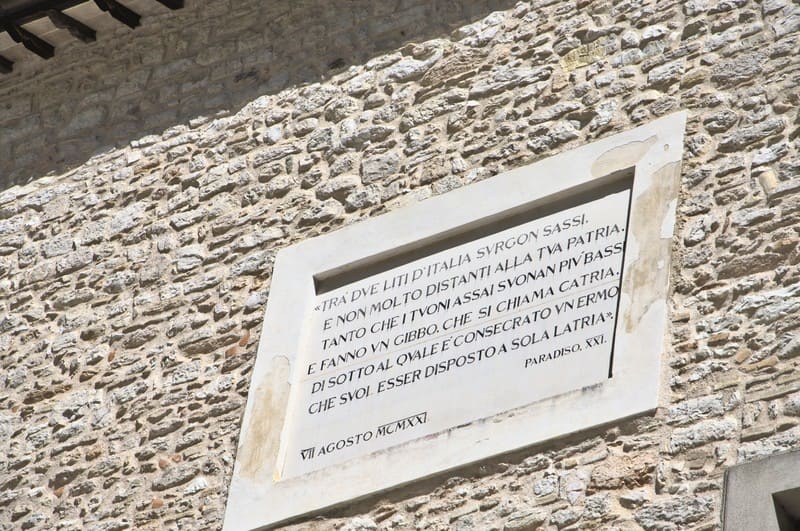
At the entrance of the monastery is the botanical garden. The 1000-year-old yew (probably the oldest in Europe?) is well worth a walk. Rather, it is a 1 hectare arboretum with ancient trees from the Apennines and Italy. You can now enter it for free.
I have to say that I am particularly attached to this Monastery, as we used to come here at least once every summer when I was a child. It has the perfect combination of cool places, picnic areas and.. delicious chocolate! Yes. The current monks not only produce homemade health products, but also the most delicious chocolate you will ever taste!
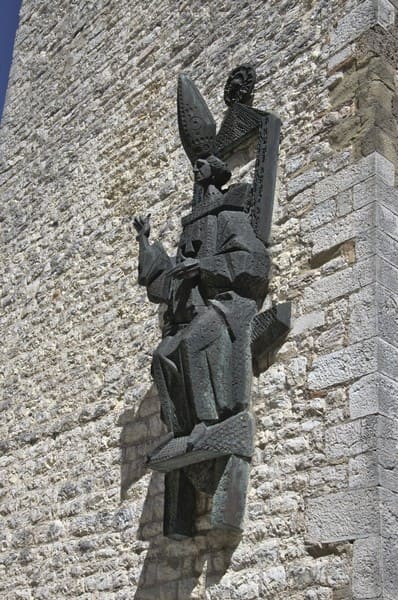
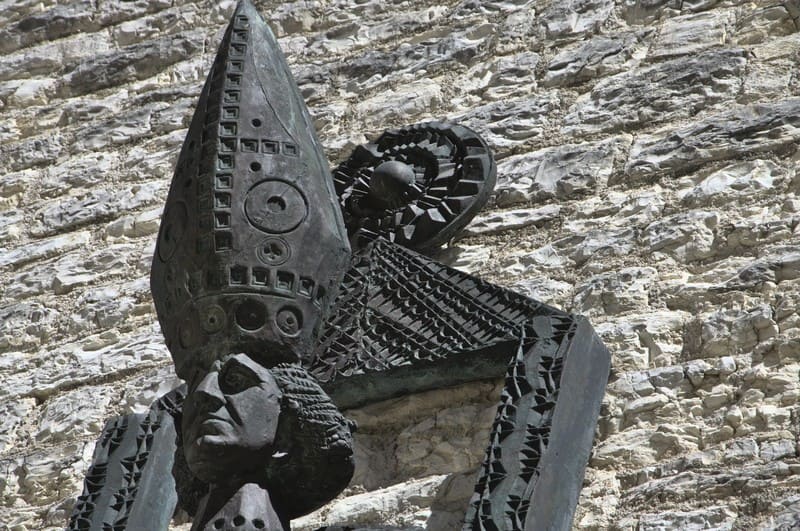
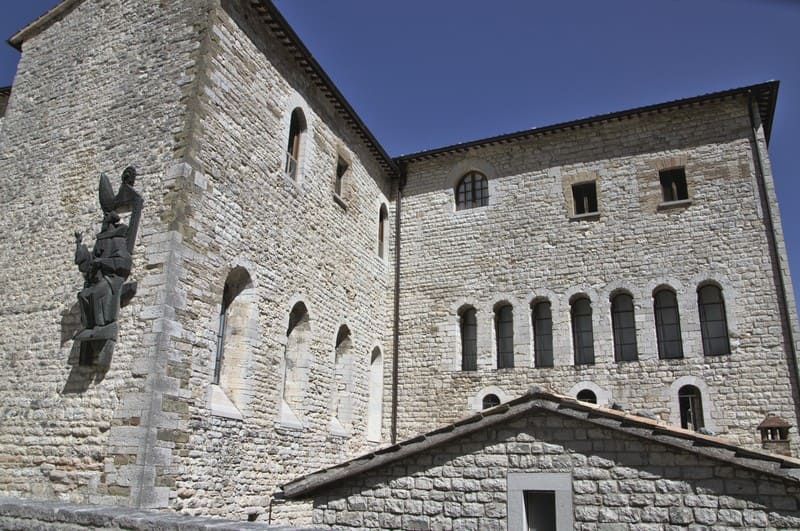
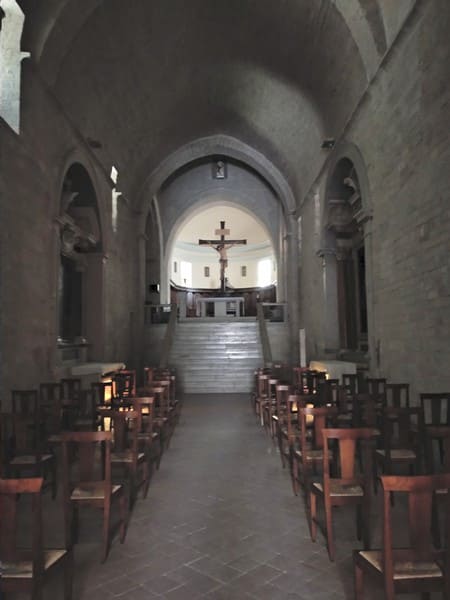
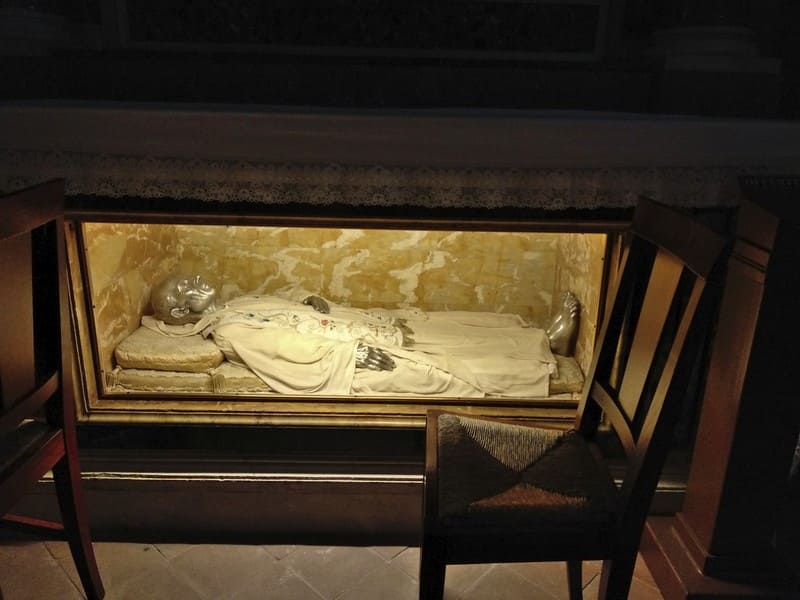

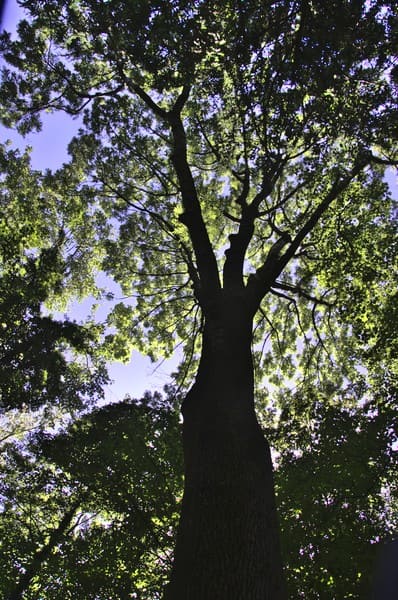
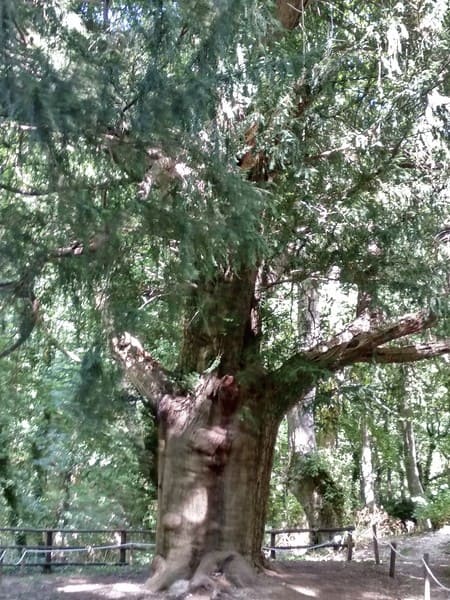
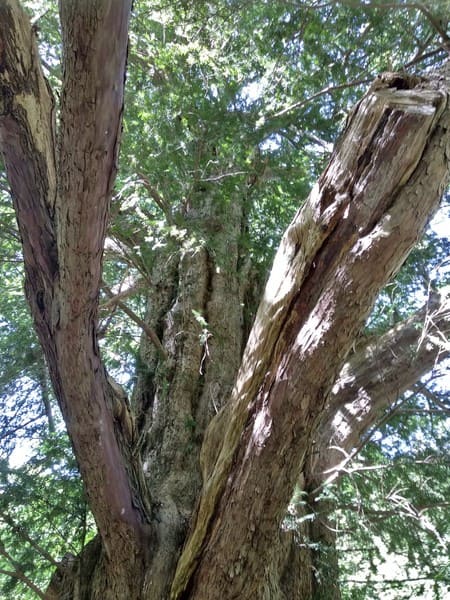
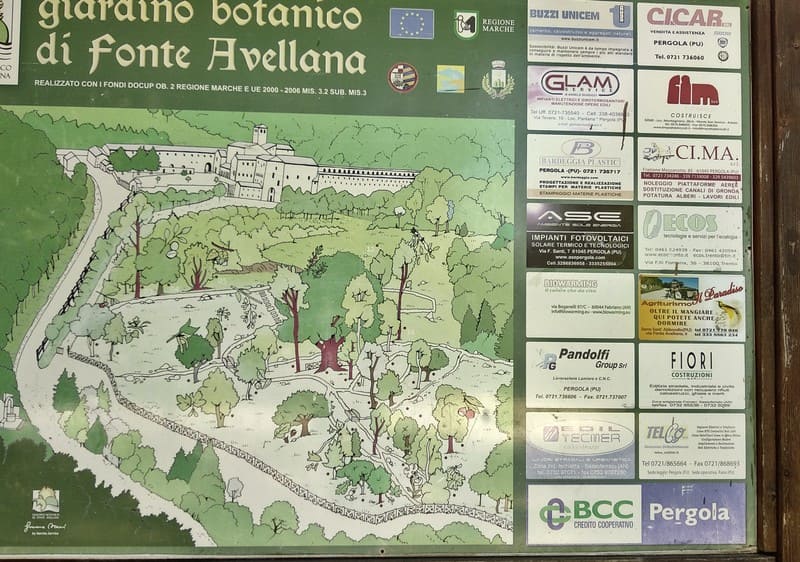
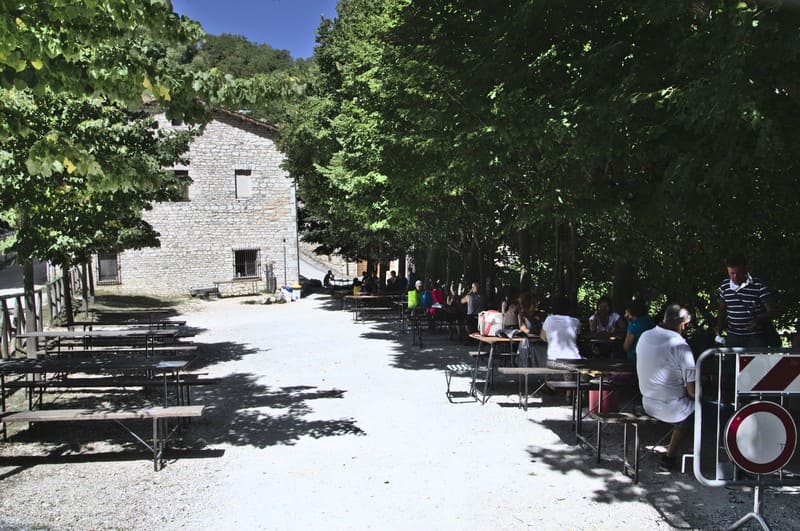
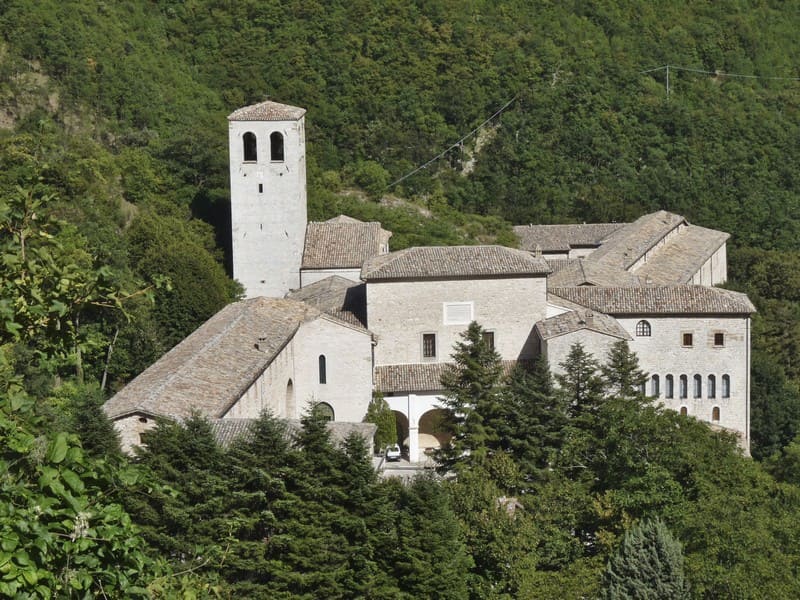

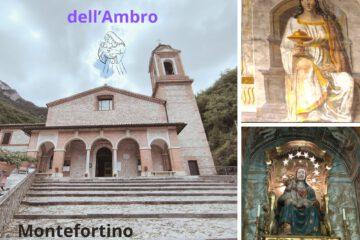
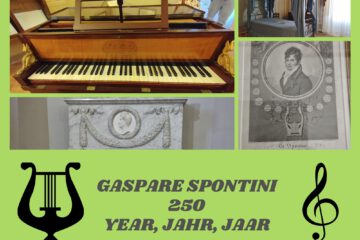
0 Comments